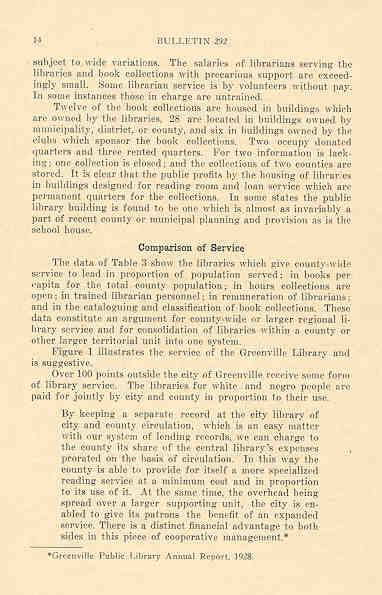by Mary Frayser
Page 15

to view scanned image
of Mary Frayser's booklet)
| The Libraries of South Carolina
by Mary Frayser Page 15 |

|
| (Click on image to view scanned image of Mary Frayser's booklet) |
By keeping a separate record at the city library of city and county circulation, which is an easy matter with our system of lending records, we can charge to the county its share of the central library's expenses prorated on the basis of circulation. In this way the county is able to provide for itself a more specialized reading service at a minimum cost and in proportion to its use of it. At the same time, the overhead being spread over a larger supporting unit, the city is enabled to give its patrons the benefit of an expanded service. There is a distinct financial advantage to both sides in this piece of cooperative management.*
This public library costs the average tax-payer less per year than the price of one good book or magazine subscription.
*Greenville Public Library Annual Report, 1928.

|
||
Back to page 14 |
To Table of Contents |
On to page 16 |